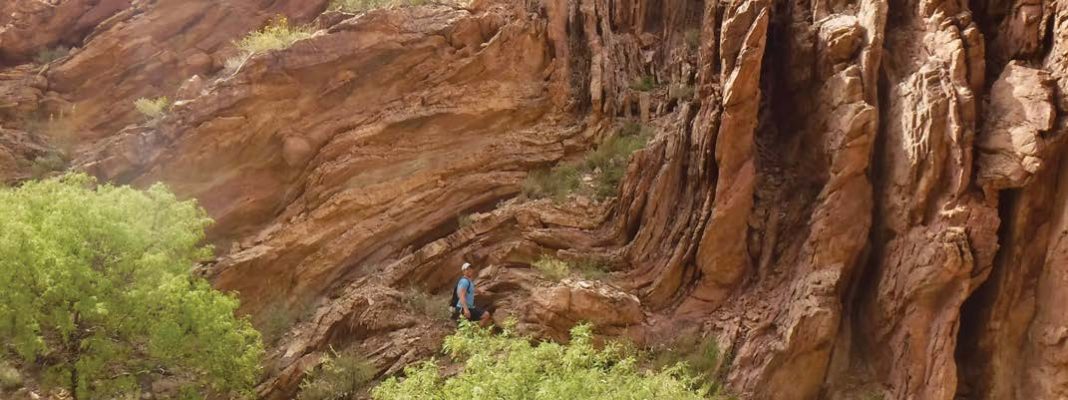Either most of the rock layers were laid down slowly and are evidence for millions of years, or they were deposited catastrophically and are dynamic testimony of Noah’s Flood.
It should be immediately obvious that these two interpretations are mutually exclusive. If one says “both!”, then the Flood would have destroyed the previous layers and laid down new ones! So, which explanation do the features of the rock layers confirm?
Rock layers around the world cover large portions of continents or even multiple continents. (Best explained by the Flood)
Between the rock layers, there is no evidence of slow erosion, soil, or topography. (Confirms the Flood)
In these rock layers, fossilized tracks, ripples, and raindrops are found. These features only form on soft sediment and would only be preserved by rapid burial by another layer of sediment. (Confirms the Flood)
Fossilized tracks tend to go up through the rock layers with the actual fossilized critter found in a “higher” rock layer, implying the critter is trying to avoid burial as rock layers were being deposited quickly during the Flood. (Confirms the Flood)
There is practically no evidence of bioturbation (evidence of life) within the rock layers. (Confirms the Flood)
All over the world, multiple rock layers are curved and bent, sometimes dramatically, in the same direction, strongly implying they were laid down around the same time and then bent all together while still wet. (Confirms the Flood)
Polystrate fossils are found around the world. These are fossils that go through multiple rock layers. This is a real problem if one believes those layers are millions of years old. (Confirms the Flood)
We observe billions of dead things called fossils buried in these rock layers that were laid down by water all over the earth. But dead things do not turn to fossils unless they are catastrophically and rapidly buried to protect from oxygen, bacteria, and scavengers. (Confirms the Flood)
Two other quick things: First, due to the moving waters of Noah’s Flood, one would expect sediment particles (clay, sand, gravel, etc.) to settle in distinct layers based on size, weight, density, and circumference. This is a well-observed phenomenon called
Hydrodynamic Sorting.
Second, rocks do not take millions of years to form. All that is required is water, sediment, and chemicals, and minerals and rocks can form quickly. Attesting to this, a ship’s bell, an ancient clock, and a spark plug have been found encased in rock.1 Also, the effects of the eruption of Mount St. Helens produced hundreds of rock layers, as well as canyons in only hours or days. All of this is great observational evidence that it does not take millions of years to make rock layers (or canyons), just a catastrophe. And to get bigger rock layers, all that’s needed is a bigger catastrophe, like Noah’s Flood!
 Loading Page...
Loading Page...



